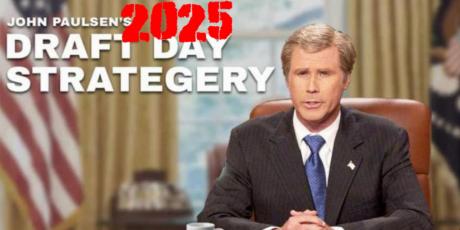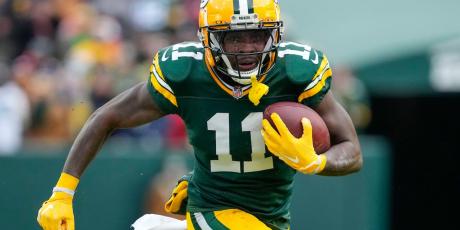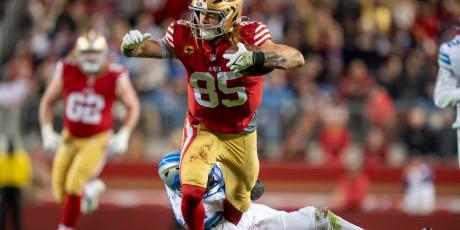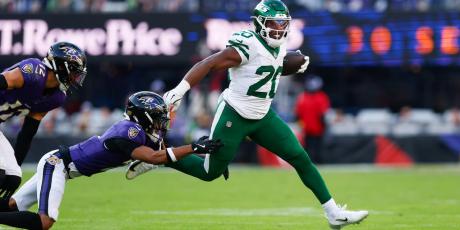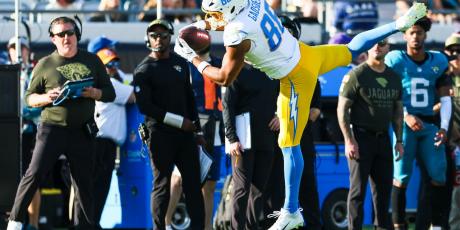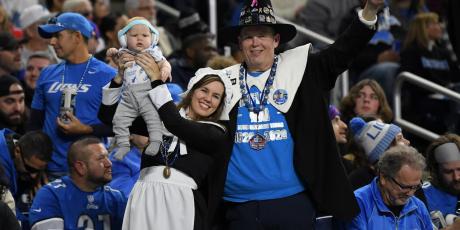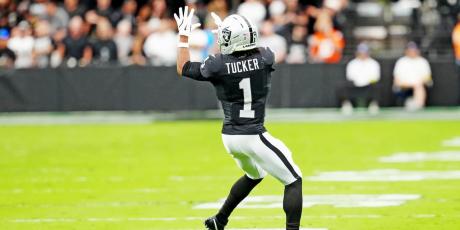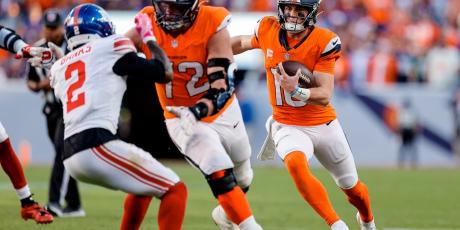Which Teams Invested in Defense in 2021?

Every offseason, once the main part of free agency is over, I compile all the defensive free agent signings to get a quantitative sense of which teams are investing on that side of the ball. One of the best measures of a player's value and ability is the contract that they sign, so I compile the Average Annual Value for each team's free agents in (players the team signed) and free agents out (players signed away by other teams) to come up with a net dollar value for each team.
A team with a large positive number means that they brought in significantly more talent than they lost and, if they spent wisely, the team should be better on that side of the ball. Conversely, a team with a large negative number means that they lost significantly more talent than they brought in, and the team should be worse on defense. Caveat: Quality coaching, draft picks and the development of younger players can offset losses in free agency.
Last Season Overview
Here's what I wrote about the Dolphins this time last year:
"The Dolphins defense was brutal in 2019, allowing the most points and the third-most yards in the league. Not only did they sign four big free agents (CB Byron Jones, ILB Kyle Van Noy, DE Shaq Lawson and DE Emmanuel Ogbah), but they also used a first-round pick on CB Noah Igbinoghene, a second-round pick on DT Raekwon Davis and a third-round pick on S Brandon Jones. If defensive-minded head coach Brian Flores can pull this group together, they could be much improved in 2020."
As a fantasy defense, the Dolphins were last in the league in fantasy scoring in 2019 and finished with the fourth-highest average in 2020! Miami spent a net $53.8 million in free agency on the defensive side of the ball and added three premium draft picks to the mix, so they had a net total of nine new players on that side of the ball. Flores successfully turned the defense into one of the best fantasy units in the league. The Dolphins saw a 102% jump in their fantasy scoring, producing 9.5 PPG in 2020 after just 4.7 PPG the year before.
It should be noted that this level of spending was the most I've seen since I started tracking these numbers in 2016. The next biggest investment was by the 2016 Giants, who spent a net of $34.5 million and improved their fantasy scoring by 17% from 7.6 to 8.9 PPG.
The second-biggest spenders last year were the Bengals (+$31.0 million) and their year-over-year fantasy scoring dropped by 25%. The Giants spent a net of $30.6 million and enjoyed a paltry 8% increase in their fantasy scoring. The Raiders (+29.9 million, -26%), Jaguars (+22.0 million, -45%) and Lions (+19.0 million, -35%) all saw their fantasy scoring decrease significantly after investing in their respective defenses. Not coincidentally, the Jaguars and Lions underwent regime changes this offseason while Jon Gruden and Mike Mayock still run the Raiders. Some teams can invest all they want in their defense, but it’s not going to matter because the coaching is suspect and/or the decision-makers aren’t spending money on the right players.
Historical Trends in Defensive Spending
I may go into more detail about this in another article, but since 2016, the 43 teams who have invested a net of at least $7.0 million on defense in a given year enjoyed an average increase in fantasy scoring of 21%. Twenty-six of the 43 teams improved, while the other 17 teams had no change or a negative change in fantasy scoring, so spending on defense certainly does not guarantee that the unit will improve, fantasy-wise.
Teams that invested less than a net of $7 million or had a net decrease in defensive payroll saw a 6% decrease in fantasy scoring. (For those wondering, teams that invested $0 to $7 million saw a 2% decrease in fantasy scoring.)
On the flip side, the 59 teams who saw a net decrease of at least $4 million on the defensive side of the ball saw their fantasy production decline 10% on average.
The five teams in 2020 that saw a net decrease in defensive spending of at least $20 million (Panthers, Vikings, Bears, Patriots and Steelers) saw their defensive scoring decrease by an average of 27%, though the Steelers were still a good fantasy defense last year.
Thanks to the lack of fan noise, 2020 was generally a bad year for fantasy defenses, but 16 of the 17 teams with a negative defensive payroll change of more than $1.0 million saw their fantasy scoring drop by an average of 17%. League-wide, fantasy defenses scored 9% fewer points than they did in 2019.
Ultimately, defensive spending in free agency is not a magic bullet for evaluating fantasy defenses, but it is another valuable data point that can indicate defensive units that are poised for an increase (or decrease) in production.
2021 Defensive Spending
Below is a table of the 2021 net free agency investment by each team. I also included the number of draft picks used in the first three rounds on defensive players to see which teams were using significant draft capital to shore up that side of the ball.
| Team | Net # In | Net $ In | Rank | Defensive Draft Picks In First Three Rounds |
|---|---|---|---|---|
| NE | 5 | $33,541,000 | 1 | 2 |
| NYJ | 1 | $21,220,000 | 2 | - |
| CLE | 1 | $19,497,500 | 3 | 2 |
| CAR | 1 | $16,552,500 | 4 | 1 |
| LV | 1 | $14,779,000 | 5 | 3 |
| MIN | 1 | $13,077,500 | 6 | 2 |
| HOU | 10 | $12,215,000 | 7 | - |
| DEN | -3 | $10,585,000 | 8 | 2 |
| NYG | 3 | $6,882,500 | 9 | 2 |
| CIN | 1 | $5,100,000 | 10 | 1 |
| KC | 0 | $2,380,000 | 11 | 1 |
| SF | 3 | $1,900,833 | 12 | 1 |
| TEN | -2 | $1,216,667 | 13 | 3 |
| JAX | 0 | $0 | 14 | 2 |
| DAL | 1 | -$250,000 | 15 | 5 |
| ARI | 0 | -$287,500 | 16 | 1 |
| TB | 0 | -$687,500 | 17 | 1 |
| BUF | 0 | -$1,750,000 | 18 | 2 |
| WAS | -1 | -$2,300,000 | 19 | 2 |
| ATL | 0 | -$3,600,000 | 20 | 1 |
| PHI | -2 | -$3,890,000 | 21 | 1 |
| GB | -3 | -$4,945,000 | 22 | 1 |
| MIA | 2 | -$6,532,500 | 23 | 2 |
| IND | -1 | -$7,854,167 | 24 | 2 |
| DET | -3 | -$8,360,000 | 25 | 3 |
| SEA | 0 | -$10,916,666 | 26 | - |
| CHI | -1 | -$13,992,500 | 27 | - |
| LAC | -5 | -$18,995,000 | 28 | 1 |
| PIT | -2 | -$22,500,000 | 29 | - |
| LAR | -5 | -$26,900,000 | 30 | 1 |
| BAL | -2 | -$28,345,000 | 31 | 2 |
| NO | -4 | -$29,750,000 | 32 | 3 |
A Few Takeaways
Note: The salaries in parenthesis are the player’s Average Annual Value, per Spotrac.
-
The Patriots lead the way with a net of $33.5 million spent on defense. Considering this unit was tied for 15th in fantasy scoring in 2020–after finishing first in 2019 and fifth in 2018–and still is led by master schemer Bill Belichick, this is an extremely dangerous defense heading into 2021. Personnel-wise, New England’s premium signings were edge rusher Matt Judon ($13.6 million AAV), safety Jalen Mills ($6.0 million), defensive tackle Davon Godchaux and inside linebacker Kyle Van Noy ($6.0 million). They will also get linebacker Dont’a Hightower back after he elected to sit out 2020 due to COVID-19. The only reservation I have about this unit is the lack of a prolific offense, because a great offense will often put the defense into positive game script (with a lot of pass attempts by the opponent) which creates opportunity for sacks and interceptions, the lifeblood of a great fantasy defense. The offense should be improved after the Pats invested in Hunter Henry, Jonnu Smith, Nelson Agholor and others.
-
The Jets (No. 26 fantasy defense last year) spent the second-most in free agency with $21.2 million on a net addition of one player. They signed edge rusher Carl Lawson ($15 million), who had a good year for the Bengals. They also added defensive tackle Sheldon Rankins ($5.5 million), linebacker Jarrad Davis ($5.5 million), free safety LaMarcus Joyner ($3 million) and cornerback Justin Hardee ($2.25 million). They lost defensive end Henry Anderson, linebackers Jordan Jenkins, Tarell Basham and Neville Hewitt. The intriguing thing about the Jets is that they hired defensive mind Robert Saleh as head coach, though they didn’t use a draft pick in the first three rounds on that side of the ball, instead focusing on getting a quarterback (Zach Wilson), a guard (Alijah Vera-Tucker) and a receiver (Elijah Moore). They do get linebacker C.J. Mosely back from COVID opt-out, so the Jets could be in the streaming conversation in 2021.
-
The Browns were a solid fantasy defense in 2020, finishing No. 13 in scoring after a No. 25 finish the year before. They had a net outlay of $19.5 million on the defense, highlighted by safety John Johnson ($11.3 million), defensive end Jadeveon Clowney ($8 million) and cornerback Troy Hill ($4.5 million). They lost defensive tackle Larry Ogunjobi in the process. The Browns added corner Greg Newsome in the first round and linebacker Jeremiah Owusu-Koramoah in the second round. The Browns should be a solid fantasy defense again in 2021.
-
The Panthers (+$16.6 million) were tied with the Patriots at No. 15 last year. They added edge rusher Haason Reddick ($8 million), defensive end Morgan Fox ($4.1 million), tackle DaQuan Jones ($4.1 million), cornerback A.J. Bouye ($3.5 million) and linebacker Denzel Perryman ($3.0 million). They also added first-round corner Jaycee Horn with the eighth overall pick in the draft. Reddick and Fox can both rush the passer and Horn should really help in coverage. If Sam Darnold can succeed at quarterback, this could be a sleeper fantasy defense and should be in the mix as a streamer.
-
The Vikings (+$13.1 million) were the No. 27 fantasy defense last season after finishing No. 6 in 2019 and No. 13 in 2018. It’s no surprise that Minnesota took a huge step back after being -$30 million in net defensive spending (losing a net of five players) heading into last season. They should get stellar edge rusher Danielle Hunter back from injury and nose tackle Michael Pierce back from the COVID opt-out list, and they added defensive tackle Dalvin Tomlinson ($10.5 million) and cornerback Patrick Peterson ($8.0 million) via free agency. Peterson had his worst PFF coverage grade since his rookie season, so it’s unclear how much he’ll help the secondary, but at $8.0 million, the Vikings must think he can help quite a bit. In the draft, the Vikings used two of their third-round picks on linebacker Chazz Surratt and defensive end Patrick Jones. With Mike Zimmer still running the team and Hunter back, I’d expect the defense to move back into the middle of the pack, fantasy-wise.
-
The Broncos ($10.4 million) should be a lot tougher to throw on this season after adding cornerbacks Ronald Darby ($10.0 million) and Kyle Fuller ($9.5 million) in free agency and Pat Surtain with the ninth overall pick in the draft. Fantasy-wise, the unit has been below average the last two seasons, but with Vic Fangio running things, they are a bounce-back candidate given these personnel improvements. If Denver somehow lands Aaron Rodgers via trade, watch out. A great offense usually leads to a bump for the fantasy defense as well.
-
The Giants’ (+$6.9 million) pass defense should improve with the addition of cornerback Adoree’ Jackson ($13.0 million) and third-rounder Aaron Robinson. The Giants also added edge rusher Azeez Ojulari early in the second round. The Giants finished No. 17 in fantasy scoring last season so they should be in the streaming conversation in 2021.
-
On the flip side, the Saints (-$29.8 million) have finished No. 7 in back-to-back seasons, but the bill is coming due. They lost defensive end Trey Hendrickson ($15 million), cornerback Janoris Jenkins ($7.5 million) and Justin Hardee ($2.3 million), defensive tackle Sheldon Rankins ($5.5 million). The Saints decided to reload through the draft, adding defensive end Payton Turner in the first round, inside linebacker Pete Werner in the second round and cornerback Paulson Adebo in the third round.
-
The Ravens (-$28.4 million), the Rams (-$26.9 million), the Steelers (-$22.5 million) and the Chargers (-$19.0 million) also lost quite a bit of defensive talent in free agency. The Rams have been a perennial top-five unit and will need to replace safety John Johnson. The Ravens (Matt Judon and Yannick Ngakoue are gone) and Steelers (Bud Dupree and Mike Hilton signed elsewhere) are regularly raided in free agency and still tend to finish in the top five in fantasy scoring.


